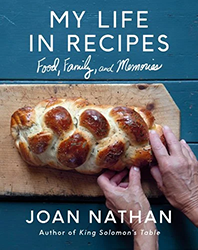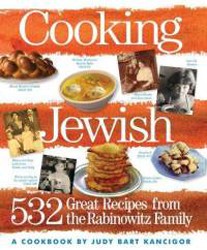In the foreword, Nach Waxman, founder of the well known Kitchen Arts & Letters bookstore in New York City, explains of the book, “We get glimpses of not just the ‘how to’ but also the ‘how it came to be…What the Gropmans are offering us is, in every way, a highly valuable contribution to the literature of cookery, of immigration, of Jewish history and of the massive combative forces of cultural change and deeply held tradition.”
The authors themselves, a mother-daughter team, say that they wrote the book “to help preserve and document the cuisine of a nearly vanished culture,” referring to that of German Jews, who lived in Germany for hundreds of years prior to World War II. The book goes into great detail about the history of German Jews and their food, taking the reader back to the Middle Ages through the Enlightenment, and from Munich to Washington Heights.
The introductions to each recipe are intriguing as well as educational. We learn that “berches, the braided ceremonial bread of German Jews, differs from challah, the ceremonial bread of Eastern European Jews, in two ways: 1) it is a ‘water bread’ (it is made without egg in the dough) and 2) it usually includes mashed potato.” The chapter “Shabbos and Holiday Meals” clues us in that carp was “the standard Friday night fish of choice,” and berches was a Shabbos essential. Another important dish for Shabbos or holidays, the Stuffed Veal Breast is a true melt-in-your-mouth delicacy. Also highly recommended is the Twice-Baked Potato Schalet (Kartoffelschalet).
This reviewer must admit that as her mother is from Alsace, France, not too far from the German border, she would often prepare the memorable Sweetbreads in Pastry Shells and the Apfel Chalet mit Birnen or Baked Apple Pudding. The author informs us that “this dish belongs to the family of Jewish foods that are baked in the oven as either sweet or savory, known variously as kugels, Schalets, or charlottes, and served with almost any type of meal – weekday, Shabbos, or holiday.”
In a chapter focusing on sausage and cold cuts, the authors include a listing of the German Jewish meat stores in New York City’s Washington Heights as well as a description of the range of products available. To accompany the cold cuts and sausages, one should absolutely prepare the no-mayonnaise and no-sugar Opa’s Potato Salad.
A very helpful “Notes on Ingredients” section, “Core Recipes” (which includes broths, white sauce, raspberry syrup, and various types of doughs), and both a general index and an index by dietary category, round out a most charming and professional tome.




